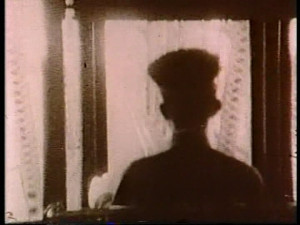"an interesting film of a holiday afloat" (Lovell Burgess 1932: 21).
"another splendid example of what can be done by a lone worker actuated by keen civic pride, and the hearty applause with which it was greeted showed that both its artistic and photographic merits were fully appreciated. We understand that this film has now been shown in all of the eighteen Bristols in America, and we hope it will be followed by many other civic films of a like nature" (HMHT 1933: 273).
[Possibly also known as Bristol – Birthplace of America, directed by F. G. Warne]
"This film opens when Ann’s swastika necklace arrives back from the jewelers. Next we see Jim and Ann spoon at a beach party, until a jealous tiff causes her to walk off into the arms of a car-owning Lothario. On a nearby heath, Ann escapes from her randy driver and walks off alone. Next day, Jim, learning that Ann is missing, grabs his pistol. On the heath, he finds Ann's swastika on the ground and sees her bound and gagged by gypsies. They get their comeuppance and Jim gets his Ann. Robert G Torrens, the producer, makes a cameo appearance as a gypsy kidnapper in the latter part of this film" (BFI Player Online).
"The story… opens in the sixteenth century with a scene showing the friendly relations between two neighbouring families as indicated by Roger de Hatherley and Richards Hawkins fishing the trout stream dividing their respective estates. Next we are shown their descendants at war over the fishing rights of the same stream, a family feud begins, and a love story which, although it does not run smoothly, ends happily" (Lovell Burgess 1932: 11).

"London's West End by night. Street life and theatrical exteriors. Three couples (Kae Lomas and Ben Carleton, Phyllis Robertson and Keith Hodder, Frieda Hale and Geoffrey Collyer) meet and have varied reactions. For the first couple it is idyllic. The second couple experience friction. The third couple spend the evening apart! Features neon-lit facades of Alhambra, Capitol and His Majesty's Theatre and everyone smoking" (EAFA Database).

"Prokino established a newsreel unit. They shot strikes and other current events, then went out to show their films. This film concerns striking bus and trolley workers, who were often in the news. A typical agit-prop film, it contains elements of performance and reenactment."
"In Rizumu 1932 nen (Rhythm 1932, 9.5mm, 1932), Kaneko played with rhythm by means of editing, this time by thematizing a large construction site where he captured machinery and workers. While he did not use as many shots of short duration as he did in Kōkyōgaku, he meticulously combined close-ups with various shots of low and skewed angles. In his personal memo, Kaneko left only a one-sentence description of Rizumu 1932 nen, suggesting that the film reflected his effort to create a rhythmic composition by integrating themes and styles." - Noriko Morisue, "Filming the Everyday: History, Theory, and Aesthetics of Amateur Cinema in Interwar and Wartime Japan" (Yale University: PhD Dissertation, 2020): 110.
Total Pages: 299